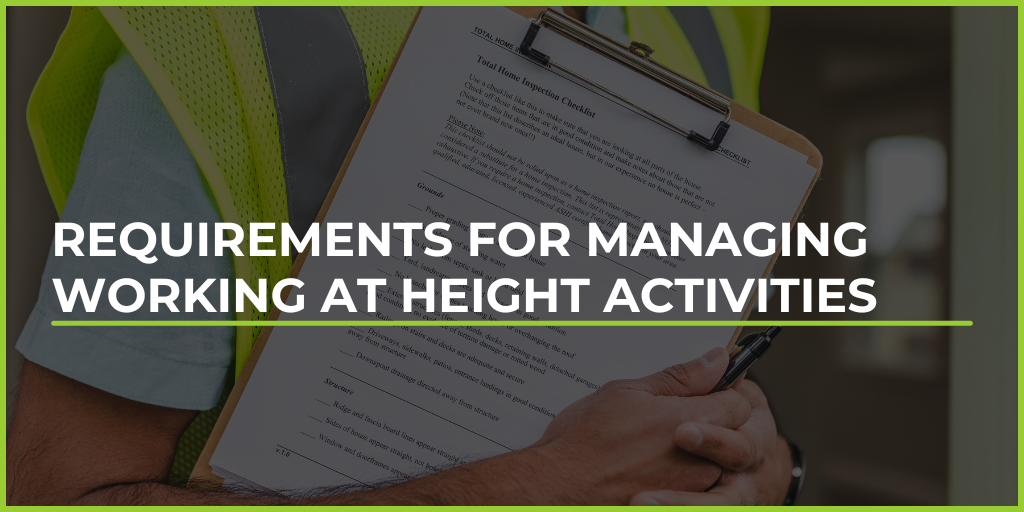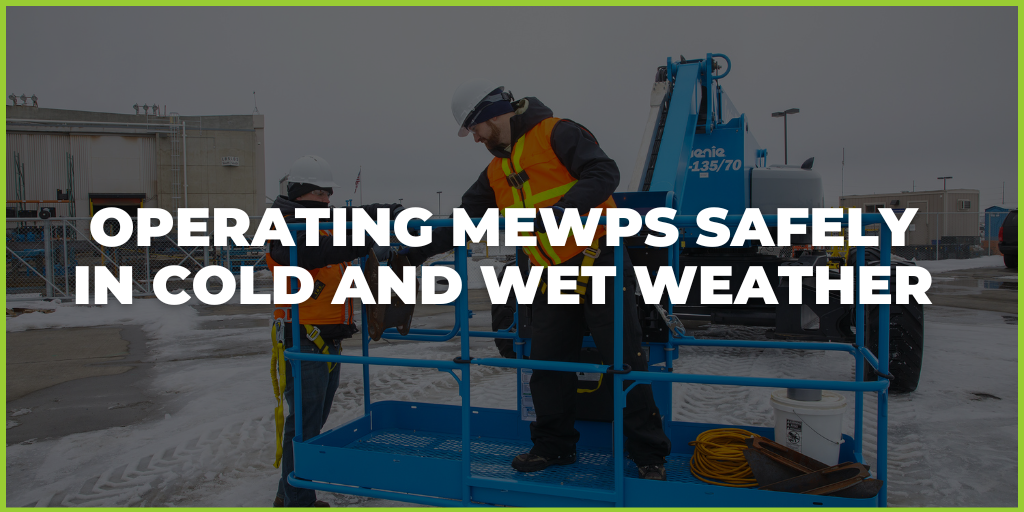What is working at height?
The Health and Safety Executive (HSE) defines working at height as ‘work in any place where, if there were no precautions in place, a person could fall a distance liable to cause personal injury’. Working at height includes activities involving equipment such as steps, ladders, podiums, tower scaffolds, bespoke platforms, and mobile elevated work platforms (MEWPs).
The impact on falls from height.
Working at height is a high-risk activity which the latest workplace accident statistics once again confirmed – of the 135 workplace fatalities in 2023, 40 are as a result of a fall from height. In addition, there has been over 40,000 non-fatal injuries when working at height. It is important to note that a fall from height will often result in a broken bone, time away from work and will be reportable under RIDDOR. The effect on individuals, their colleagues and families can be devastating.
Introduction
This blog series will highlight key safety measures required to prevent falls from height by implementing a step-by-step process to check and assess whether your organisation's current safety measures are up to date to ensure a safe and productive working environment. To achieve this, we will cover topics such as completing risk assessments and creating rescue plans, which are a legal requirement when planning, managing, and carrying out any work at height tasks. In addition, you will gain access to valuable resources and templates that will help guide you and your colleagues in managing your workplace activities.
What is a risk assessment?
A risk assessment is part of a risk management step-by-step process for controlling health and safety risks caused by hazards in the workplace. As an overview this includes assessing risks by identifying, analysing, and controlling hazards. Depending on your business size, this can be achieved by either a competent employee or advisor. The aim is to minimise risk exposure, reduce accidents, and adopt a positive health and safety culture. It also helps in the effective management of your organisation's risk.
- Identify Hazards: To maintain a safe working environment, it is important to observe and record any hazards that could endanger the safety of those working on your/your customers premises. This can include evaluating how & why employees work at height, could activity be eliminated and if not, are they using the most appropriate equipment, whether the condition of the premises is safe or unsafe, and lastly, whether there any further hazards present e.g. are chemicals or substances being used.
- Assessing the risks: After identifying the hazards, you can analyse how effective your organisations current safety measures are in helping prevent the risks to employees and/or minimising them if unable to remove risk. To accomplish this, rate the level of risk associated with each hazard to determine who may be affected and the possible outcome if an accident were to occur, what measures are currently in place to mitigate the risk and what additional measures could be adopted.
- Controlling the risks: The purpose of a risk assessment is to eliminate or reduce the risks. To achieve this, you must consider what further controls can be made to stop the hazards altogether or reduce the risk levels. Practical solutions such as replacing old MEWPs and training workers will maximise productivity and safety by minimising equipment faults and the risk of injuries. According to The Work at Height Regulations 2005, ‘a personal fall protection system shall be used only if a risk assessment has demonstrated that the work so far as is reasonably practicable be performed safely while using that system; and the use of other, safer work equipment is not reasonably practicable’.
Why do we use risk assessments?
Performing a risk assessment is necessary by law to ensure the safety and wellbeing of employees and to assess the effectiveness of control measures during any working at height activity. This process informs and involves all workers on site of potential risks that have been identified. Businesses must comply with the following measures according to the Health and Safety at Work Regulations 1999.
Organisations that fail to implement proper safety procedures may suffer significant financial losses due to absenteeism, legal fines, and repairs for damaged equipment. An example of a company that was prosecuted for not assessing the risks before starting work at height activities reported by the Health and Safety Executive (HSE), was at a building site where multiple health and safety failures that impacted workers’ protection. As a result, the company was fined £20,000 for poor safety management.
When should a risk assessment be done and how often?
A risk assessment should be your first call of action when planning out every task. As with any work at height activity, new equipment and processes may be required along with training. Therefore, new hazards will arise that will need assessing. Risk assessments are to be shared with all concerned whether directly or indirectly involved. Sharing this information is key to managing safety within your organisation and providing employees, contractors, and visitors with a safe environment to work in.
Conclusion:
Ensuring the safety and well-being of employees in the workplace should be a top priority for all industries, these include but are not limited to facilities management, manufacturing, transportation, food and drink production, pharmaceutical, local authority and construction. Conducting a comprehensive risk assessment is essential to achieving this goal, which includes evaluating all equipment and tools being used, worker competence, and the surrounding environment before any work at height activity is conducted. At Height Lift & Shift (HLS), we can provide support to your organisation by conducting a site survey and risk assessment to identify practical solutions and minimise the risk of falls.
In our upcoming blog, we will provide tips on assessing the risk levels of work at height activities and how to conduct a risk assessment.
Click here to DOWNLOAD OUR RISK ASSESSMENT FORM.
CONTACT US HERE: Enquire about having professional site surveys and/or risk assessments carried out at your site.




